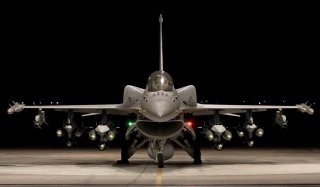F-16V Fighters For Taiwan: $8 Billion Well Spent? Yes and No.
From the author: "It is incumbent on President Tsai and her advisers to mull the opportunity costs of the looming F-16V purchase. What Taipei spends on Vipers cannot be spent on something else, barring a major increase in the fraction of GDP allocated to defense. If $8 billion would buy platforms and weapons with greater operational and strategic heft, budgeteers should redirect funding to procure them."
Taiwan could buy lots of Tuo Chiangs for the $8 billion now earmarked for a luxury fleet of fighter jets that have some political value but doubtful combat value. (The lead vessel in the Tuo Chiang class reportedly cost all of $66.39 million. Crudely speaking, that’s the price of one F-16V.) On balance, Taipei would be better off investing in armaments that would help the island ride out an assault—and achieve its strategic and political aims. President Tsai swept into her second term in a landslide. She should spend some of that political capital weaning the military and populace away from the conceit that the island’s air force and navy can win a stand-up fight against PLA air and sea forces.
They cannot.
Once the precept that sea denial is both necessary and sufficient takes hold, setting priorities for force acquisitions and selling the electorate on them should prove straightforward enough. And the alliance factor? If Taipei shows Washington that porcupine measures could stall a cross-strait offensive, that would actually make it easier for a U.S. president to order the U.S. Pacific Fleet and affiliated joint forces into battle. It would grant the White House time to deliberate and formulate effective war plans rather than feel compelled to hurl forces headlong into the fray. Plus, it would show Americans that Taiwanese are stalwart about helping themselves and are not passively awaiting rescue.
Such a people is a good cause.
In the end, then, the strategy and politics of the situation would profit more from a clutch of unglamorous missile boats and truck-launched missiles than from squadrons of high-tech fighters. And strategic and political success is what it’s all about.
James Holmes is J. C. Wylie Chair of Maritime Strategy at the Naval War College and coauthor of Red Star over the Pacific. The views voiced here are his alone.
Image: Lockheed Martin.

